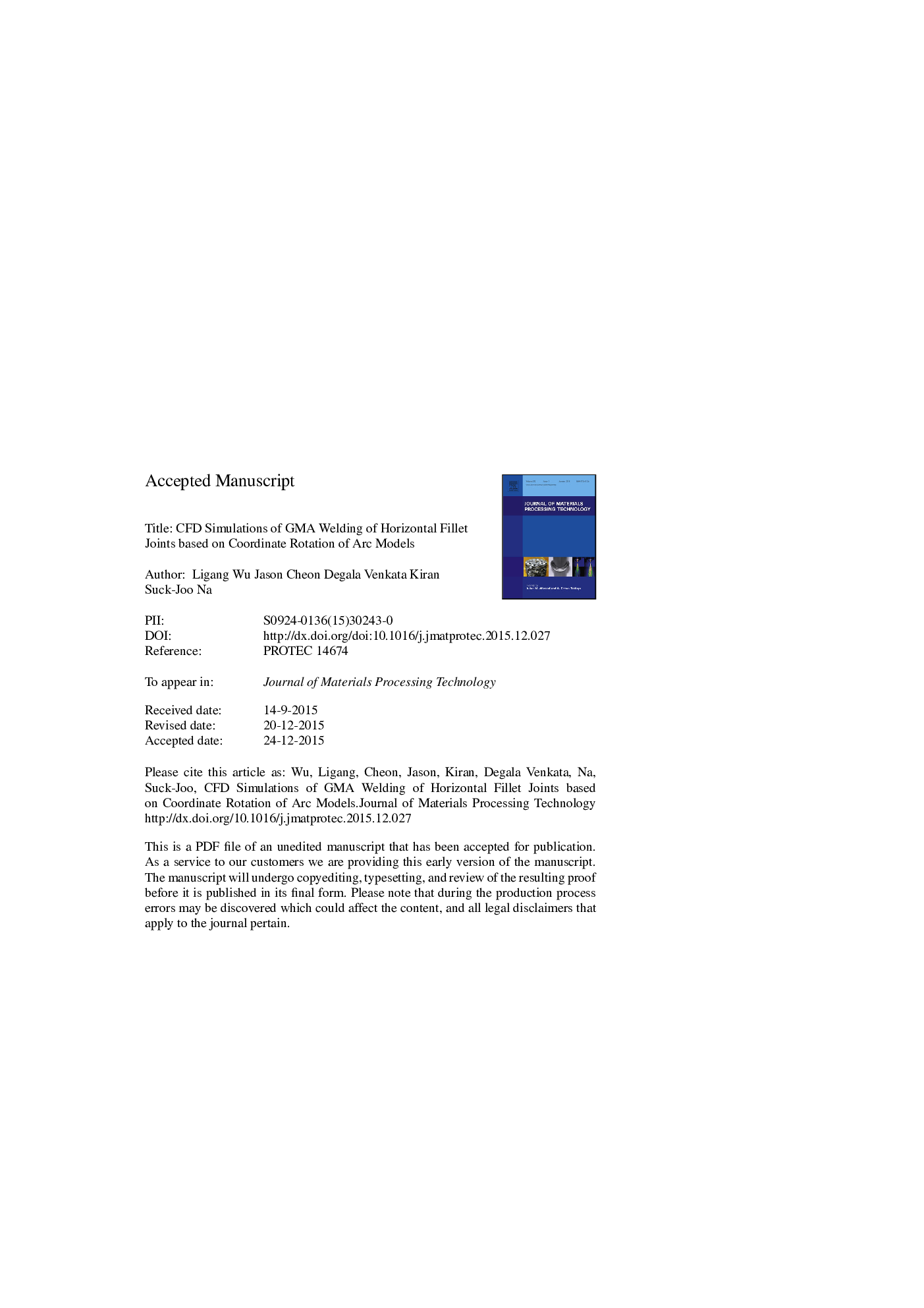| Article ID | Journal | Published Year | Pages | File Type |
|---|---|---|---|---|
| 7176748 | Journal of Materials Processing Technology | 2016 | 38 Pages |
Abstract
This study conducted both experiments and simulations of gas metal arc welding of horizontal fillet joints with different welding speeds and wire feed rates. Front and side arc images were respectively captured by a CCD camera placed in front of the workpiece and beside it in each experiment. The arc models, including surface heat flux, electromagnetic force, arc pressure and drag force, were formulated in a rotated (xâ²-yâ²-zâ²) coordinate system whose zâ²-axis was consistent with the arc axis. A higher welding speed made the arc behaviors less stable and may induce undercut on the vertical plate, whereas a higher wire feed rate enhanced the stability of arc behaviors. The arc images were analyzed to determine the effective arc radii of the arc models by applying both the Abel inversion technique and Fowler-Milne method. The radial distance, vertical distance and material thickness were calculated respectively to approximate the electromagnetic force distributions, and the resultant electromagnetic force distributions were analyzed in details. The resultant arc models were subsequently used to simulate each welding experiment. The molten pool behaviors by different welding speeds and wire feed rates were compared and analyzed, and the simulation models were verified by comparing the experimental and simulation results.
Keywords
Related Topics
Physical Sciences and Engineering
Engineering
Industrial and Manufacturing Engineering
Authors
Ligang Wu, Jason Cheon, Degala Venkata Kiran, Suck-Joo Na,
